Hollywood loves to make loading and operating firearms look effortless. Pretty much every action movie ever makes reloading an afterthought, at best.

But anyone who’s ever pushed thirty .223 cartridges into a magazine a few dozen times during a long day at the range knows how time-consuming and hard on the thumbs the task can be.
In the event you plan to load multiple magazines, either simply to streamline your time on the firing line, or for the purposes of competitive practice, you’ll quickly find your thumbs aching and your trigger time diminishing.
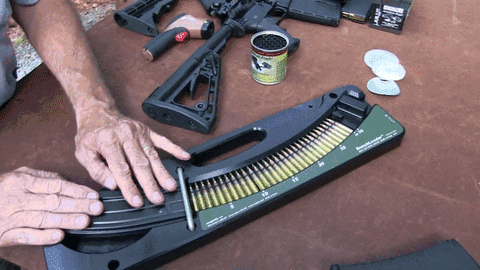
That is, unless you invest in a quality magazine speed loader. These miracles of modern engineering—OK, they’re actually pretty simple in both design and operation—mean you’ll fill your magazines more quickly, spend less time abusing your digits, and more time doing what counts: putting shots down-range.
Let’s take a look at some options that will have you out shooting rather than reloading the entire time you’re on the line.
Pistols: What Works Best?
Chances are, you’ll probably want to start with a quality after-market loader designed to work with the caliber and magazines you shoot the most. Some manufacturers include their own speed loaders with firearm purchases, but these are often relatively inexpensive and leave a lot to be desired.

Luckily, the after-market options we’ll look at are designed to be relatively universal, robust, and can serve to load nearly any cartridge into your magazines.
Especially for newer shooters, younger or older shooters, those with brand new magazines, shooters with smaller frames or impaired hand strength, magazine speed loaders can be a godsend, literally allowing access to shooting sports where it might not have been possible before.
In this section, we’ll take a look at various pistol magazine speed loading options. This is a good way to get a feel for the benefits and drawbacks to speed loading and unloading (hint: there aren’t many).

Note that we won’t be covering speed strips or moon clips for revolvers, as these aren’t necessarily intended for the same application, and are outside the scope of this article.
So, without further ado, let’s take a look at some good all-around options for those seeking pistol magazine speed-loading perfection.
Best Pistol Speed Loaders
Maglula UpLULA Magazine Speed Loader
The UpLULA, or “universal pistol loaders and unloaders accessories,” is probably one of the most well-recognized speed-loading products on the market today. This type of speed loader and the acronym “LULA” have been widely copied and are mostly synonymous with speed loaders in general.
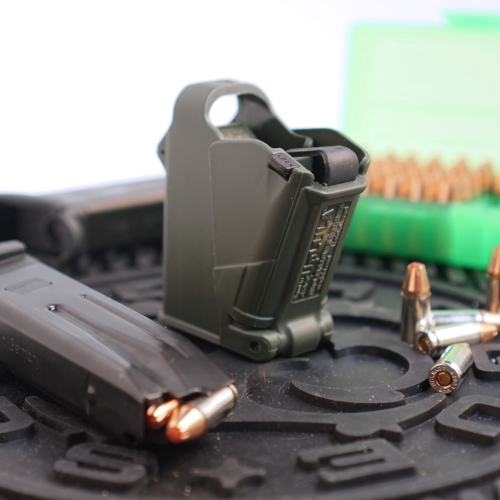
I think it would be easier to tally up the number of times I haven’t seen one in use at my local range. I could probably count those instances on one hand.
One reason for its ubiquity is the variety of cartridges the UpLULA is compatible with. It can handle 9mm Luger, .357 Sig, .40 cal and 10mm, and .45 ACP cartridges, according to the manufacturer, and will load most .380 ACP magazines, all in both single- and double-stack configurations.
It’s designed to be compatible with the majority—if not all—of various manufacturers’ magazine offerings.
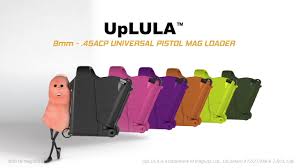
The UpLULA is available in several colors, and the design is simple, keeping the UpLULA compact and streamlined. It will fit in most pockets, it’s easy to operate and will save your thumbs from painful overuse while you load single cartridges into your magazine with relative ease.
Though we recommend doing some hand strength training to help you master pistol shooting, it’s still very nice not to have to worry about repetitive stress injuries from repeatedly fumbling with 9mm cartridges as you struggle to put that last round in your new magazine.
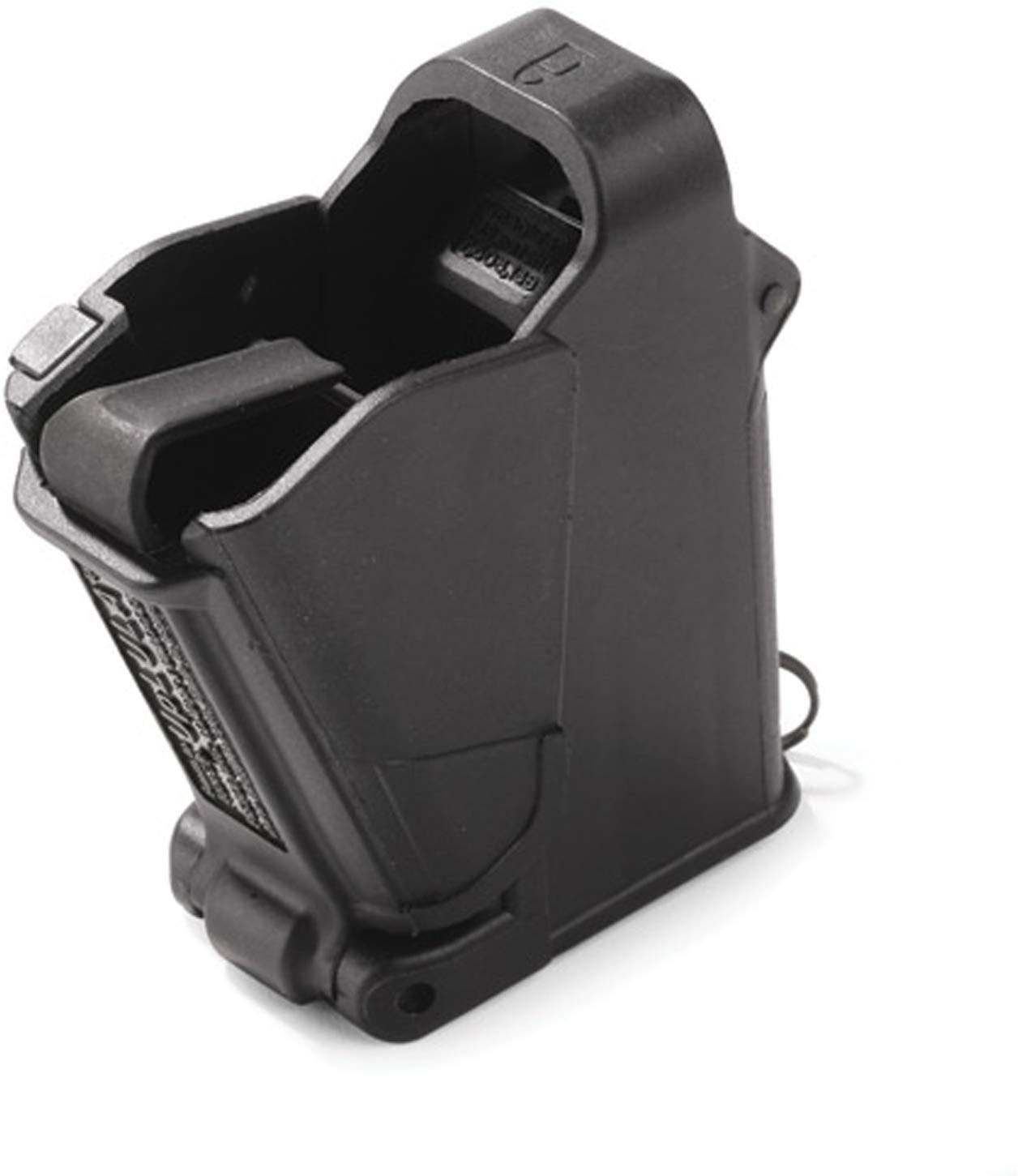
Maglula UpLULA Magazine Speed Loader
Pros
- Compatible with 9mm, 10mm, .357, .40- and .45-caliber mags
- Works with single and double stack pistols
- Make reloading magazines super simple
Cons
- Not the fastest loader, but the easiest
Ease of Use
The UpLULA is designed to make loading individual cartridges a snap. It does require some manual dexterity to master, but it isn’t difficult to operate once you get the hang of it.
Once you place a magazine in the loader, it self-centers and is ready to use. To operate the UpLULA, you press down and squeeze on the unit. This engages the loading finger, which depresses the magazine follower. You then place a single cartridge at the top of the loading bay, and release your grip.
That’s it. The finger retracts, resetting the UpLULA. When you depress and squeeze the unit again, the finger seats the previously loaded cartridge in the magazine while depressing the follower. You can then repeat the process until your magazine is at capacity.
The UpLULA features rugged build quality, and I haven’t heard many shooters complain about equipment failure. It’s manufactured in Israel, and its user-friendliness means it’s appropriate for almost any shooter.
The unit can be locked in its closed position for easy storage, and it is exceptionally small, not much bigger than the top half of a 10-round-capacity magazine. You can also pick up a 1911AI Aligner Insert, which is sold separately, to make feeding certain single-stack magazines easier.
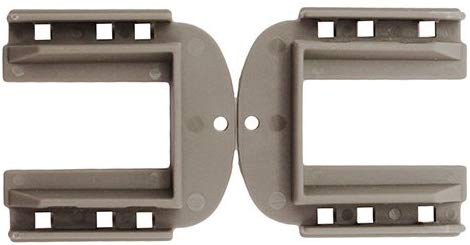
Maglula states that users can load a round each second with the UpLULA, and in my experience, this is about accurate. It does take a little bit of practice to master the motion required, but the loader is intuitive to operate and doesn’t require a great deal of strength.
Does It Work?
Thousands of shooters can’t be wrong. The UpLULA is an exceptional loader that performs with very few faults. There are a few issues to take note of, however.
For starters, I think it’s a good idea to load the first cartridge into your magazine by hand. This is because many magazine followers are made of less-durable materials such as plastic or polymer, and the UpLULA finger, which is made of metal, might scratch or tarnish the finish as it depresses the follower.
I’ve never seen this happen personally, but it’s theoretically possible.
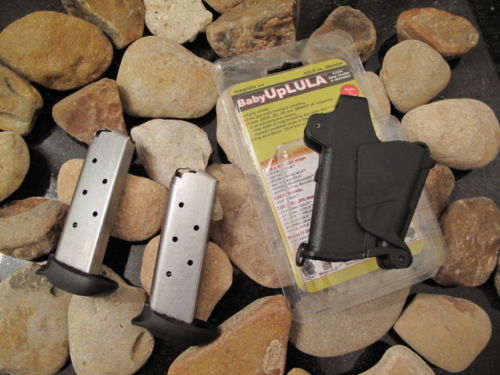
Next, it does take a little bit to master the manual dexterity and rhythmic motion necessary to operate the UpLULA at its theoretical limit of one round per second.
But after a break-in training period, I think this loader is extremely intuitive to operate, and once you’ve mastered the hand movement required, there’s little you can do wrong to foul up your loading procedure.
It may not be the fastest speed loader available, but it’s easy to use and extremely efficient compared to hand-loading cartridges into a magazine. Because of this, I highly recommend the UpLULA for nearly any pistol shooter.
Elite Tactical Systems (ETS) C.A.M. Universal Speed Loader
This loader features a design similar in principle to combining the function of a stripper clip with a mechanical speed loading apparatus for magazines. It is engineered to be universal, meaning it will work with any magazine on the market for a given caliber, according to the manufacturer.
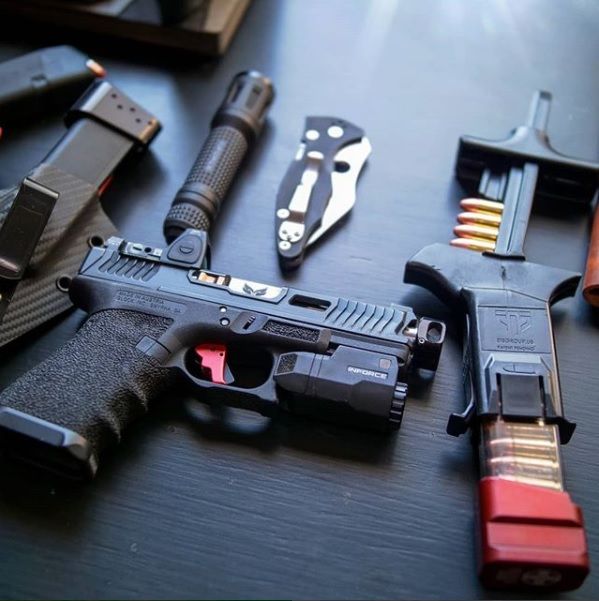
The second generation of the C.A.M. has feed lips inside the loader designed to seat both single- and double-stack magazines, though single-stack mags will have a tendency to wiggle a bit, even if they’re seated properly.
Each model is intended for use with specific calibers, so be sure you get the right one for the magazines you plan to load. There is a model for loading 9mm and .40 caliber ammunition, one for .380 caliber ammunition, and one for .45 ACP.
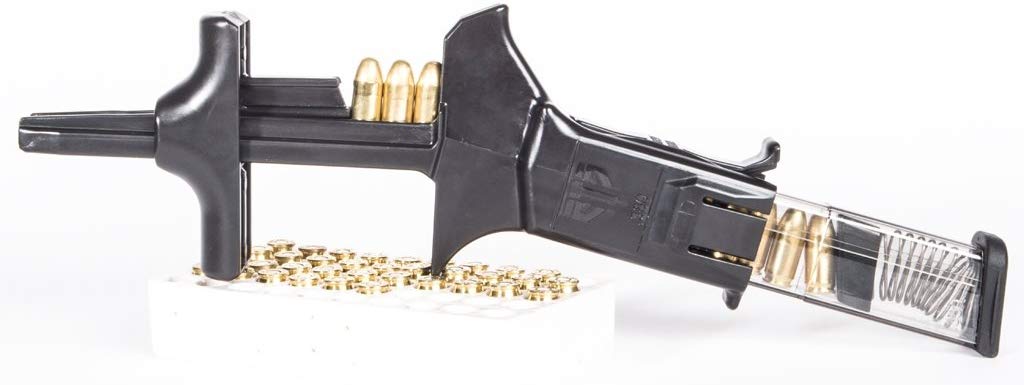
Elite Tactical Systems C.A.M. Universal Speed Loader
Pros
- Works with virtually all brands of pistol magazines, double or single stack
- Load magazine directly from ammo tray or with loose ammo
- Made in the USA
Cons
- Need an individual loader for every caliber
Ease of Use
This speed loader has a lot of virtues that make it exceptional in the marketplace, but also a few drawbacks. The ETS C.A.M’s design is unique in that it has a strip feeder arm that extends from the top of the loading bay. This lines up with your cartridge rims to pre-load up to 10 rounds picked up from a plastic ammunition tray.
Though it is bulkier than some other speed loaders, if used properly, it removes the need to individually pick up and place each cartridge into the loading bay, meaning you can potentially reload multiple magazines very quickly.
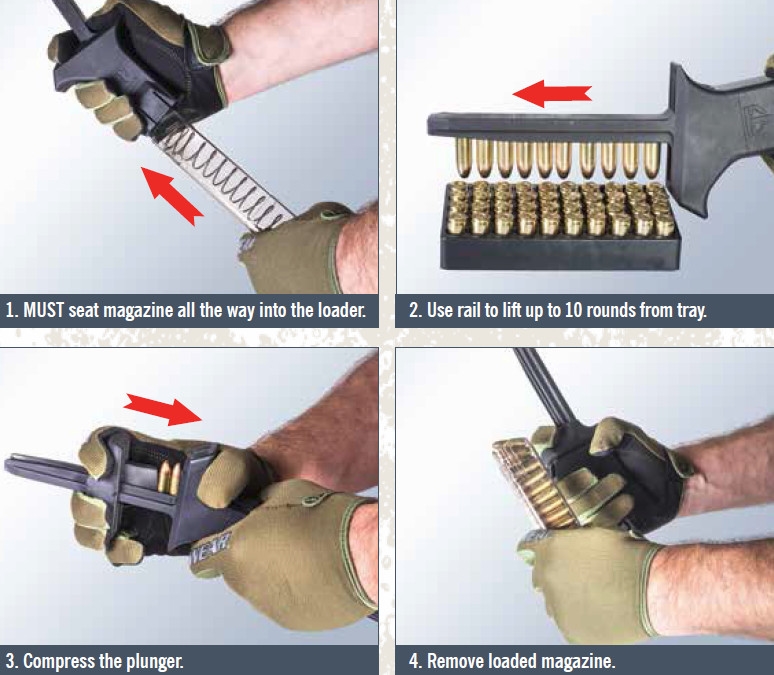
First, before you attempt to put any ammunition into the strip feeder attached to the top of the loader, make sure you have a magazine inserted securely into the base. It will produce a second click after it clears the second tab inside the base of the loader.
This means you’ve fully seated the magazine in the speed loader. If you don’t seat the magazine correctly, you’ll just end up dumping ammunition all over the place. This is because the magazine acts as a stop for the cartridges that have been inserted into the strip feeder.
Keep in mind, especially if you’re using steel magazines, not to jam the magazine into the C.A.M. too forcefully or abruptly. Remember, this product is made of plastic, so repeated rough handling may cause problems and wear or even break the tags inside the loader.
ETS recommends putting a little bit—I suggest just a small dab—of your favorite gun oil on the back of the mouth of the loader, just below the strip feeder, to help ensure the rear of each cartridge feeds smoothly into the magazine.
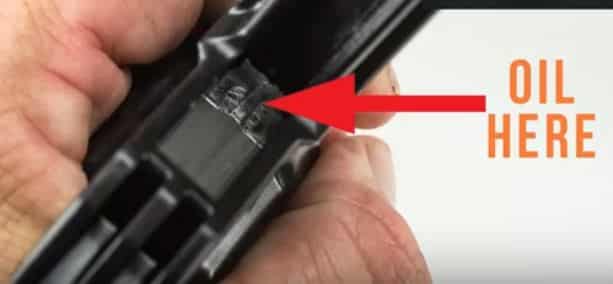
Next, remove the plastic plunger from the base of the strip feeder and align the top edge of the strip feeder with the rim of the first cartridge held in the row of cartridges within the plastic ammo caddy you took straight out of your ammo box.
While the caddy is still sitting on a flat surface, slide the strip feeder up the row of cartridges. The top end of the strip feeder has a notch on each side that aligns with the cartridge rims. This will pick up every cartridge in the row by the rim and hold it in place for loading.
Before you try to load the ammunition into your magazine using the detachable plunger included with the feeder, turn the loader over in your hand so that the bullet tips are facing up. This is important to prevent misfeeds, the manufacturer reports.
Now, bracing the magazine against your chest or another stable, vertically oriented surface, align the plunger at the top of the strip feeder, and push against the cartridges. This will automatically feed all loaded cartridges into the magazine in one quick motion.
Is It Good?
I personally like this unit, though, in full disclosure, I don’t own one. I’ve only seen it used a few times at the range.
However, I will say that when I had a chance to try it out a couple of times, it worked without much fuss. That said, I haven’t done extensive testing with it. Also, I’ve only used it with Glock magazines, which may be something to note.
Some users have reported that the plastic parts can break after repeated use, but again, I can’t confirm durability, and it is possible there may be user error or rough handing involved. Most reports I’ve read state the C.A.M. is robust and works well.
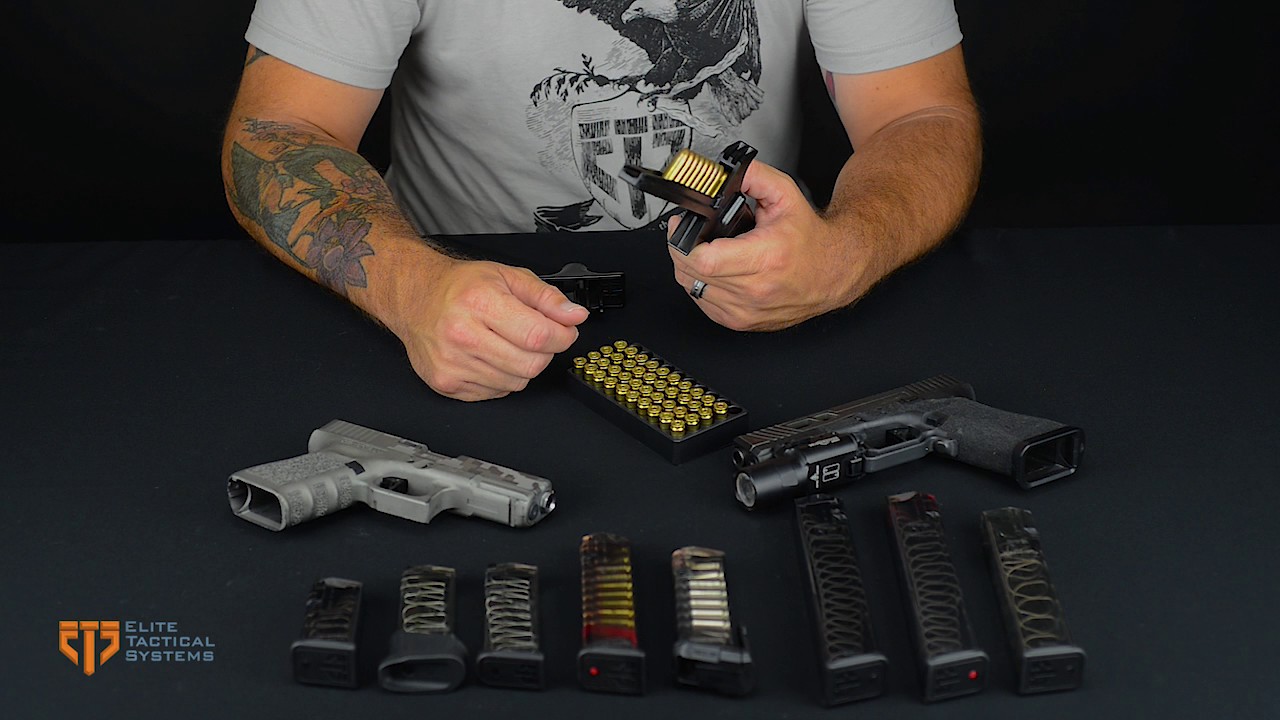
Keep in mind, the C.A.M. is manufactured in the USA. It appeared sturdy when I handled it, though I could see how some parts might wear out with extensive use.
It’s a little larger than some other magazine speed loaders, but I think it more than makes up for this with its innovative design and speedy operation.
I really like the C.A.M., especially because it has the potential to speed up the loading process so much. The strip feeder design means you don’t have to fumble with individual cartridges.
Another thing to consider, however, is that if you don’t like to take store-bought boxes of ammunition to the range, prefer some other method to transport your ammunition, your ammo doesn’t come loaded in ammo trays, or you just don’t use ammo trays, the C.A.M. won’t provide you an advantage.
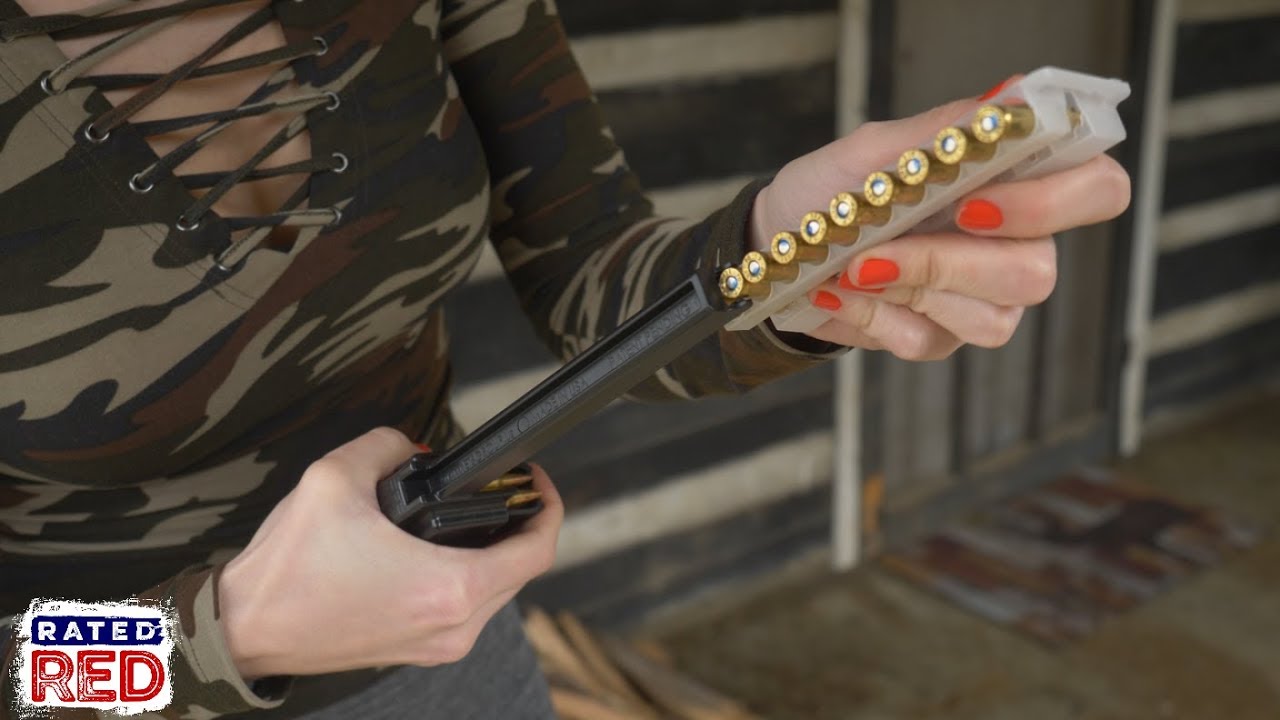
I guess you could load single cartridges down the strip feeder—warning, I haven’t tried this, and it isn’t how the C.A.M. was designed to operate, so I don’t recommend this approach—but at that point, I think you’d be better off with another loader.
Also, the design is limited in that it can only operate with a relatively spare selection of cartridges. But if you have one of the supported cartridges, I think you’re in luck.
Do your due diligence before purchasing, and make sure you’re buying something that will work with your particular setup.
All things considered, however, in my opinion, at $30, the ETS C.A.M. is a buy, even if you just want to experiment with what is probably one of the fastest pistol magazine speed loaders available.
MakerShot Custom Magazine Speedloaders
American SpeedLoaders are somewhat similar to other common top-loading speed loaders on the market, though the line features one big difference. Instead of being universal, you have to purchase the loader designed for the cartridge and specific magazine you plan to use.
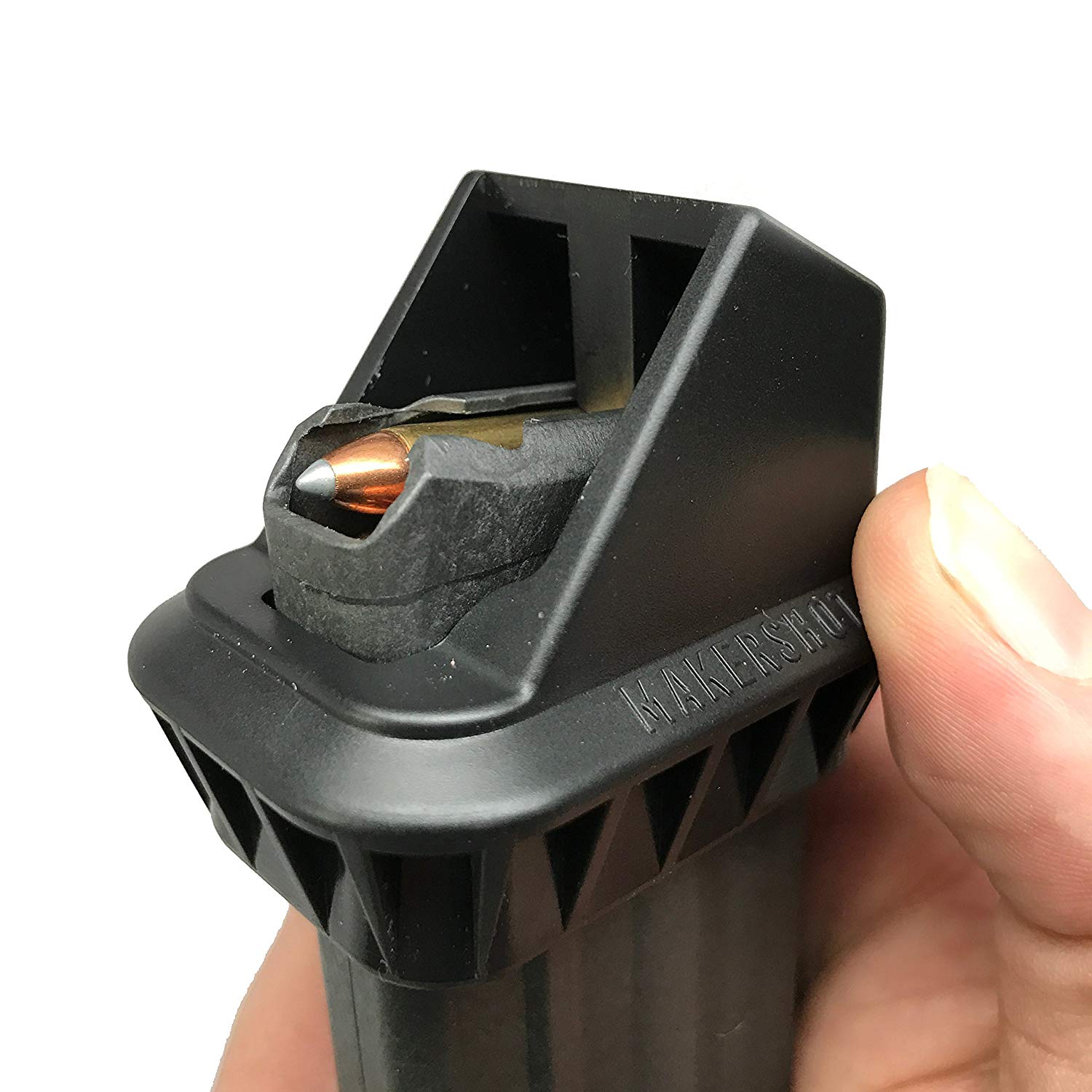
Of course, this may not be ideal for all shooters, but if you only have one or two cartridges you like to shoot, and you prefer to use identical magazines from the same manufacturer, the MakerShot speed loaders can be an excellent option.
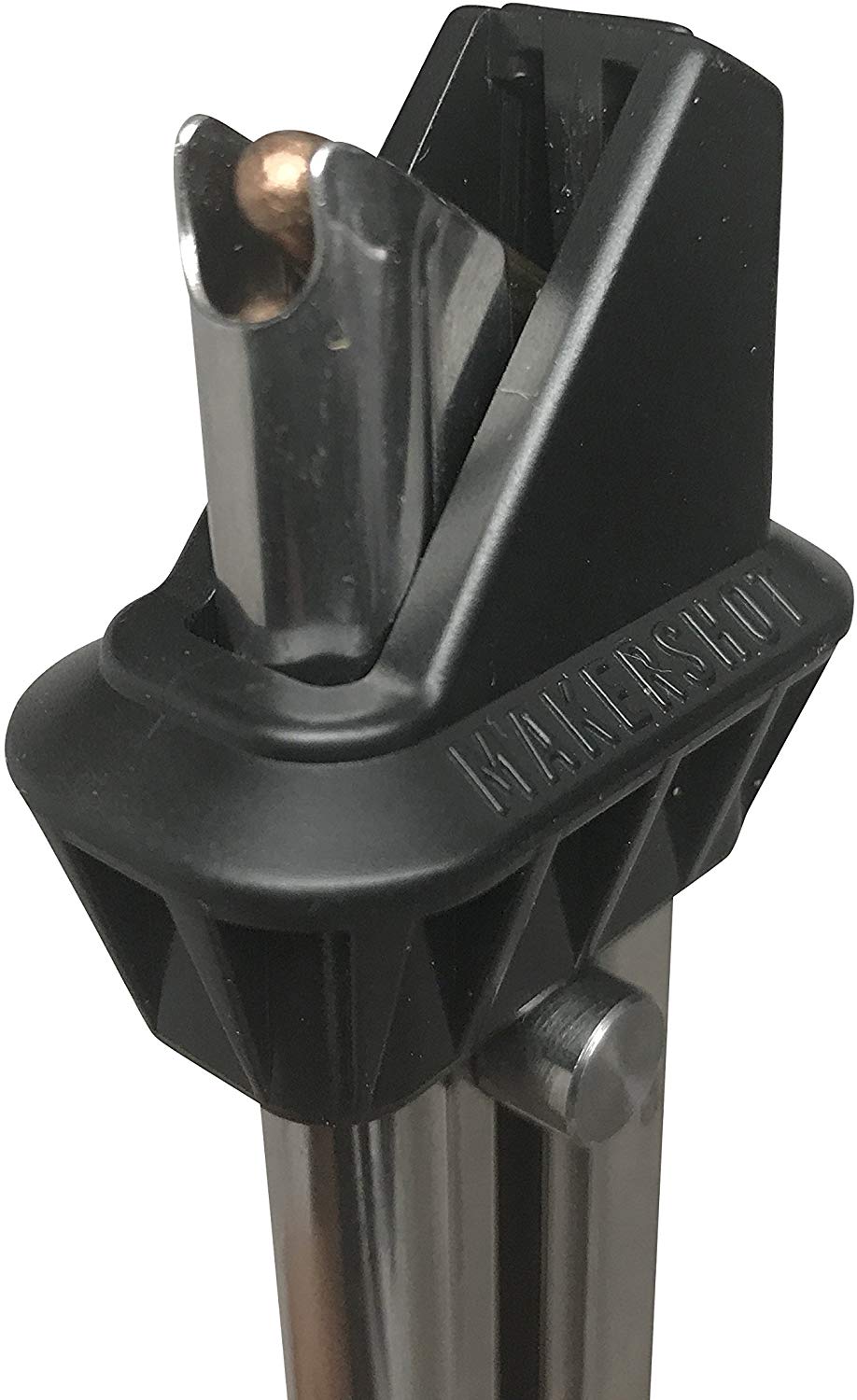
MakerShot Custom Magazine Speedloaders
Pros
- Great speed, ergonomics and lifetime durability
- Made in the US
- Perfect fit on selected magazine
Cons
- Not universal
Ease of Use
I prefer to describe the MakerShot speed loaders as semi-automatic—no pun intended—because you still have to push each cartridge back to seat it in the magazine. The main function of the loader is to make depressing the follower easier, and to align the cartridge.
But the loader doesn’t include a mechanism to actually push the cartridge all of the way into the magazine.
It’s best to start by hand-loading a single cartridge into your magazine. Then, you simply place the loader over the top of your magazine, push down to depress the follower, and push another round against the finger at the back of the mouth of the loader.
You then let the loader lift back up and push the round back into the magazine manually. You can then depress the follower again and load another round. One advantage I’ll note is that this doesn’t require a lot of practice or too much coordinated movement.
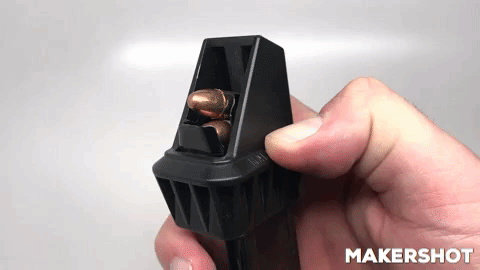
On the other hand, you still have to exert some force with your thumb, and I wouldn’t be surprised if you find the last few cartridges harder to load than the first, depending on the magazine you’re using.
It’s a simpler design, and as such may not be the perfect choice for those who benefit from greater mechanical assistance from their speed loaders.
This is a no-frills option, and to be honest, it probably isn’t the easiest to use, but the loaders appear sturdy and seat well, as we should expect with designs manufactured to fit specific magazines.
Is It Good?
The MakerShot loader is a budget option that offers high quality and functionality over some firearm manufacturer speed loaders. It isn’t as easy to use as some other aftermarket options, and its limitations mean you’ll have to carry multiple models if you plan on loading more than one specific type of magazine.
That said, the line does work well, and is a no-fuss option for those who don’t like bells and whistles.
These speed loaders aren’t as fast, aren’t as intuitive, and don’t offer much beyond helping you depress your magazine’s follower and aligning the round, but if that’s all you need, a MakerShot SpeedLoader is a good buy.
Best Rifle Speed Loaders
The basic premise is the same when it comes to speed loaders for rifles, so we’ll jump right in and review a few models to get an idea of what’s available and what I recommend.
Maglula LULA loaders
These loaders work similarly to their pistol magazine cousins, and because the Maglula products are so popular in my experience, I don’t feel we can discuss rifle speed loaders without mentioning these.
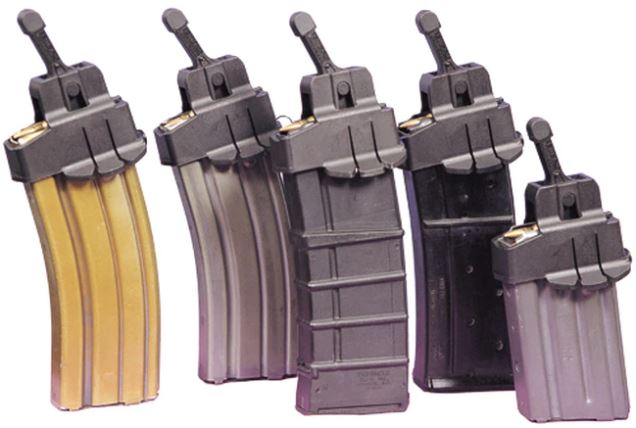
The LULA loaders are available in various configurations for 9 mm SMG, 5.56, and 7.62 magazines, among others, and use a lever system instead of the clamping system seen in the UpLULA models.
Sadly, these aren’t as universal as UpLULA speed loaders, but unless you have a very extensive collection of rifles or SMG-style guns, you probably won’t have to drop too much on one of these to get what you need.
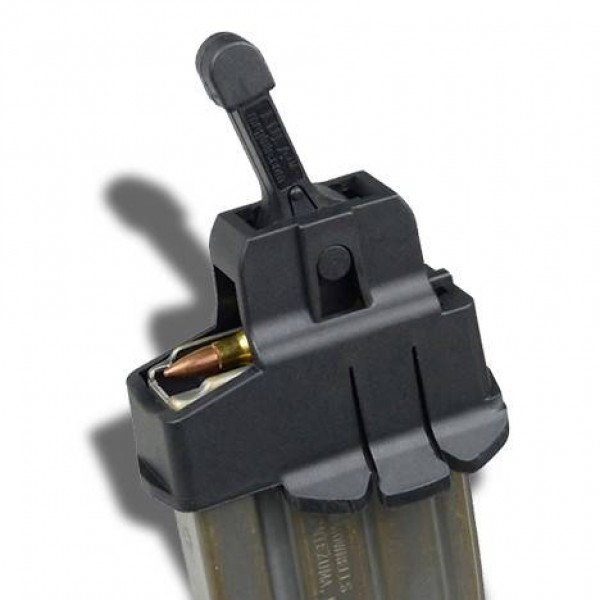
Maglula LULA loaders
Pros
- Loads 10, 20, 30, 40 & 100 round 5.56 / .223 magazines
- All-in-one magazine speed loader and unloader
- Tested and combat proven
Cons
- Not as universal as the pistol loaders
Ease of Use
The LULA’s lever system is very easy to use—even easier than the mechanism the UpLULA line uses. Where the UpLULA requires a bit of manual dexterity, to use the LULA, all you have to do is flip the lever back and forth as you feed in rounds.
The lever first depresses the follower when you set it to the back position. You then drop a cartridge into the loader, flip the lever forward, and load the next cartridge. You flip the lever back again, and continue the process.
It’s very intuitive, requires very little manual dexterity, and utilizes one of the easier methods for speed loading I’ve seen, short of buying a more expensive contraption that aligns cartridges and loads through a more complicated mechanical apparatus.
Is it Good?
Of the less-expensive hand-operated rifle cartridge speed loaders, this is one of my favorites.
It works consistently, is very easy to operate, and doesn’t malfunction much.
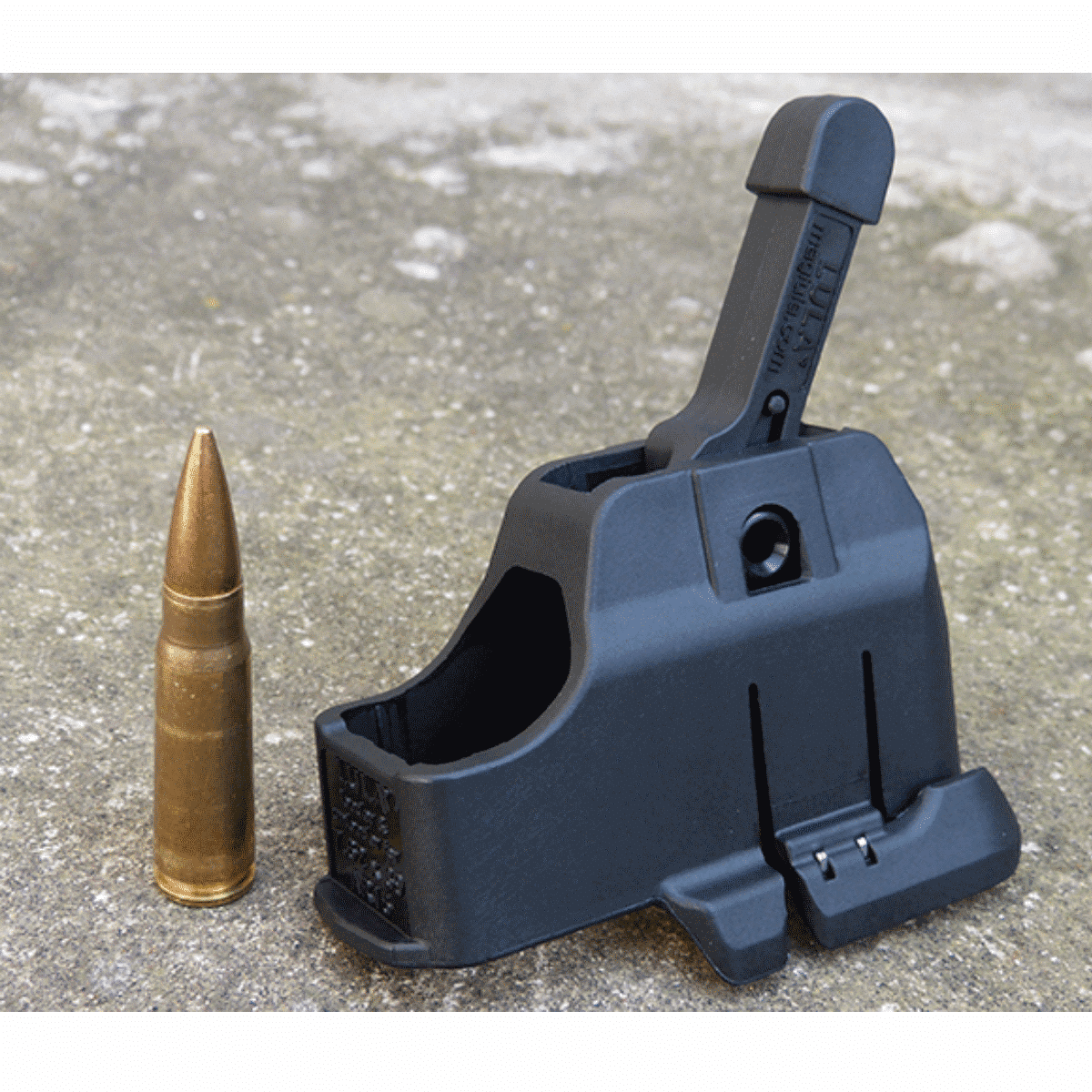
You can spend more for rifle magazine speed loaders, and some of the more expensive options are very good, but if you only have a single rifle or a particular cartridge you prefer with a few magazines to load, you likely won’t need too much more than an UpLULA.
Podavach U-Loader
Manufactured in Ukraine, the U-Loader has a simple design that allows it to be fairly universal. You don’t need multiple sizes or special versions for certain cartridges.
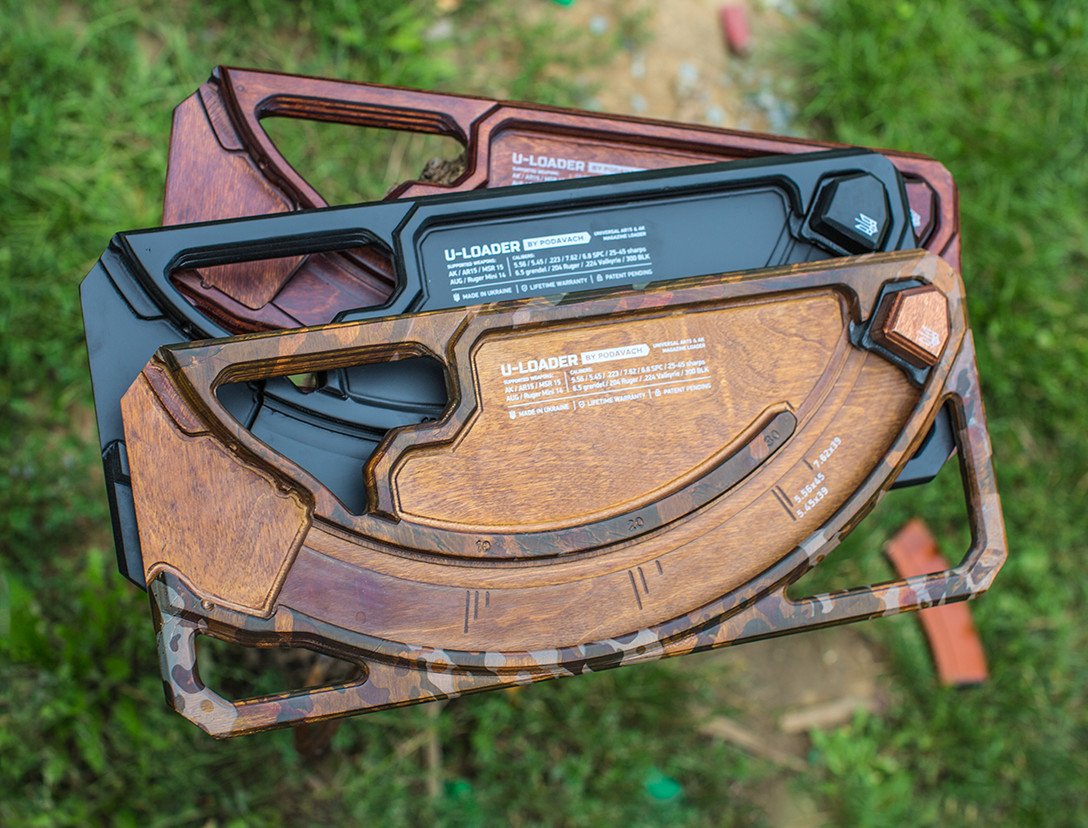
The U-Loaders sits on a tabletop, and though it is larger than some other speed loaders, it has other advantages.
Compatible with .223, .224 Valkyrie, 25-45 Sharps, 300 BLK, 204 Ruger, 5.45, 5.56, 6.5 Grendel, 6.8 SPC, and 7.62 in a wide variety of magazine configurations, the U-Loader is one of the more versatile rifle speed loaders around.
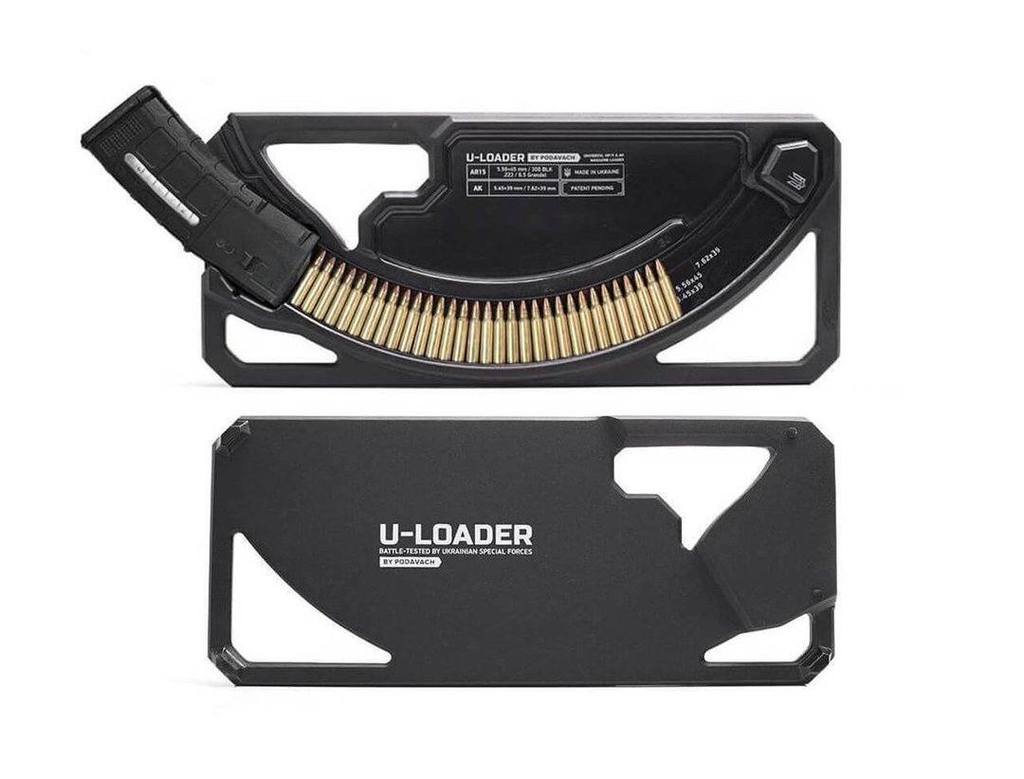
Podavach U-Loader
Pros
- The pusher is equipped with a magnet for extra security
- Round markers for different calibers (10, 20, 30) are etched on the loader
- Waterproof and durable
Cons
- Considerably larger than other speed loaders
Ease of Use
Because of its design, the U-Loader can handle a wide variety of cartridges with varying degrees of taper. This means that smaller 5.56 magazines or long, high-capacity 7.62 magazines will fit the wood cutout section with ease.
The unit sits on a flat surface. All you have to do is drop in the number of cartridges you want to load into the designated area, align them with the grove in the loading section, and manually slide the magnetic pusher to load them into the magazine.
The hardest part is aligning the cartridges themselves, and it isn’t actually hard. It just takes a little bit of time. Once that part is complete, loading is quick and efficient.
Is it Good?
While it isn’t the smallest unit I’ve seen, the U-Loader is extremely versatile, and still relatively cheap, especially if you have to load multiple cartridges into magazines with various configurations.
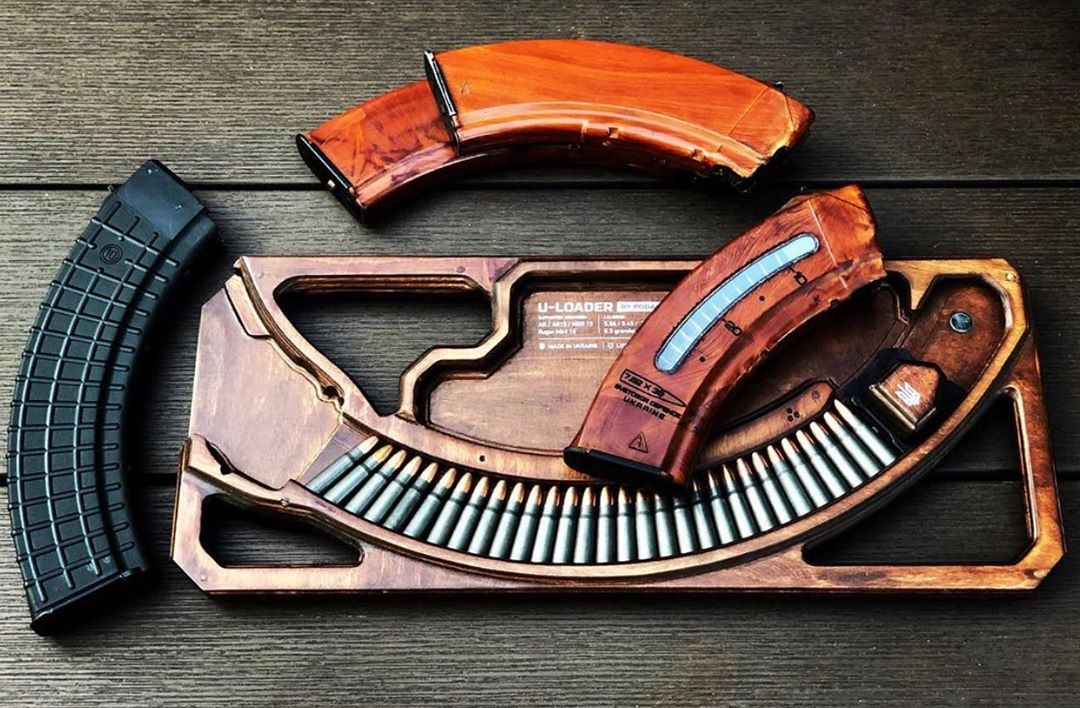
It’s quick and efficient, and I like the design. If you need something that’s compatible with a lot of different magazine types, you might want to pick one of these up.
MagPump Loaders
This stand-up unit features mechanical cartridge alignment—up to a point—and lever operation that makes for quick loading. It’s designed to be placed on a tabletop, with rounds feeding in from above.
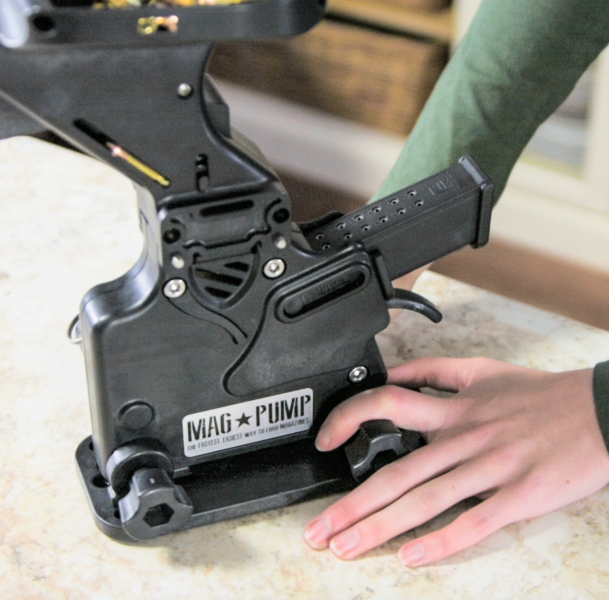
There are models designed for AR and AK magazines, and the MagPump is fairly universal. It’s a pricy unit, but it has some advantages serious shooters might like.
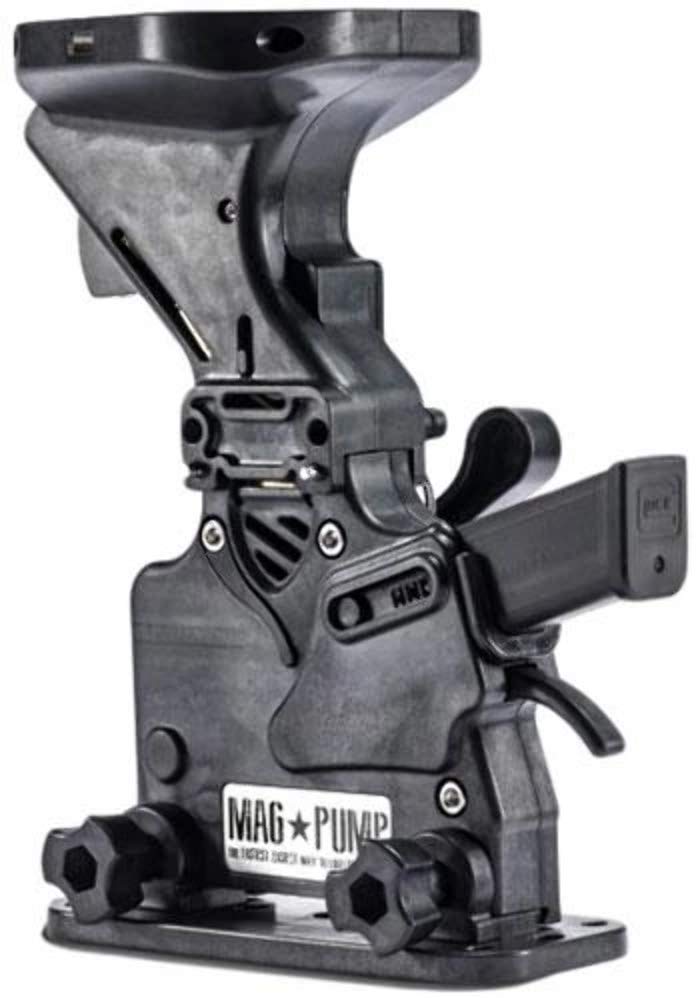
MagPump Loaders
Pros
- 50 round capacity hopper
- Includes 6 retainers that adapt to various magazine brands
- Self-sorting hopper orients ammunition in either direction
Cons
- Expensive
Ease of Use
The MagPump is one of the easier rifle speed loaders to operate. You insert your magazine at the slot in the bottom of the loader, drop cartridges oriented either forward or backward into the hopper at the top, and push a lever on the side to load each cartridge.
That’s it. The MagPump is a very hands-off unit. It doesn’t take a lot of manual dexterity to operate, and the chief benefit is you can push cartridges into a magazine very quickly.
That said, the unit is much more mechanically complex than other loaders, and will require attention to detail to operate without issue.
For one, I’ve read reports that if the cartridges aren’t aligned with the bullets pointing either forward or backward in the hopper—not at an angle relative to the feeding mechanism inside the unit—users have experienced jams and misfeeds. Obviously, this could be user error, but it’s something to consider.
Is it Good?
The biggest benefit I’ve seen with the MagPump is the sheer speed with which it can load high-capacity rifle magazines. It may take some practice to be as quick as possible, but this loader is designed more for the serious shooter who needs to load multiple mags in a short amount of time.
It is reportedly somewhat more finicky than simpler speed loaders, but if you’re considering spending this amount of money, you likely have need of the greater capacity and efficiency the MagPump provides.
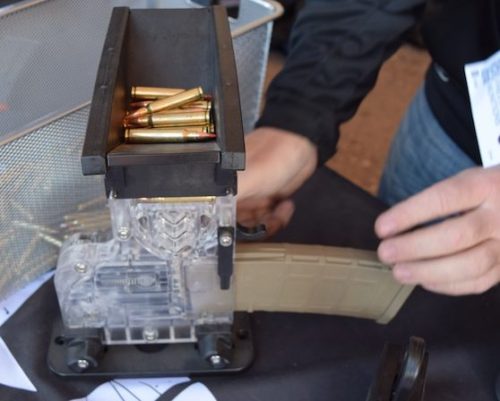
It’s specialized, but if you want to crank out a lot of loaded magazines in a short amount of time—say when you’re loading for a large group on a crowded range day or during a competition — this may be the unit for you.
Conclusion
There definitely isn’t one speed loader for every person in every situation. However, there also isn’t a shooter alive who wouldn’t benefit from saving their thumbs and loading magazines more quickly at the range.
Most of the devices we’ve covered are simple enough to learn to operate, relatively cheap, and reliable. So, even if you are an absolute novice to the sport of shooting, you will definitely want to consider picking up a speed loader for your magazines.
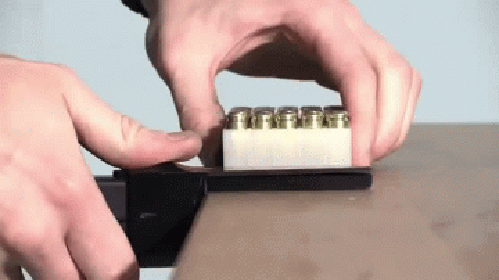
Take it from someone who has pushed many hundreds of rounds against stiff magazine springs—there’s very little reason not to save yourself the time and effort loading on the range.
Did your favorite speed loader make our list? Any others you’d recommed? What do you think of speed loaders? Tell us all about it in the comments below! While you’re here, take a look at the best red dots–and get on target faster.


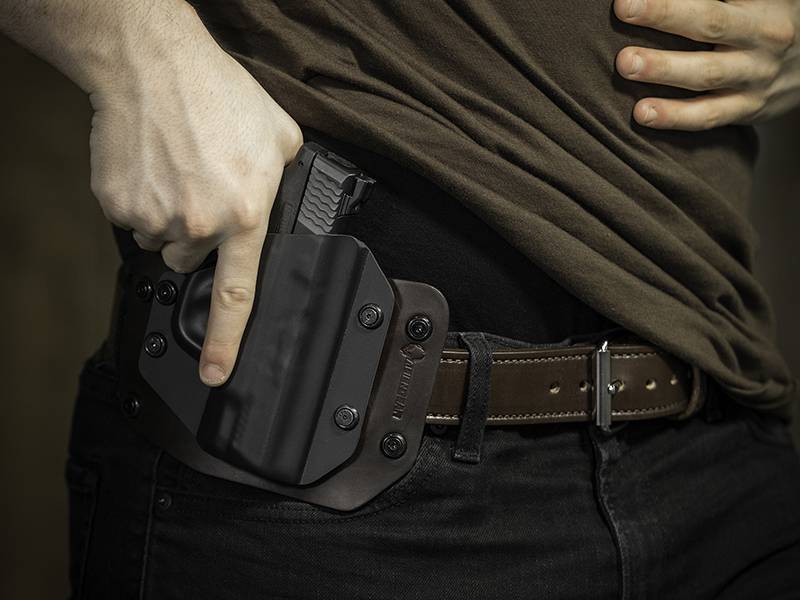
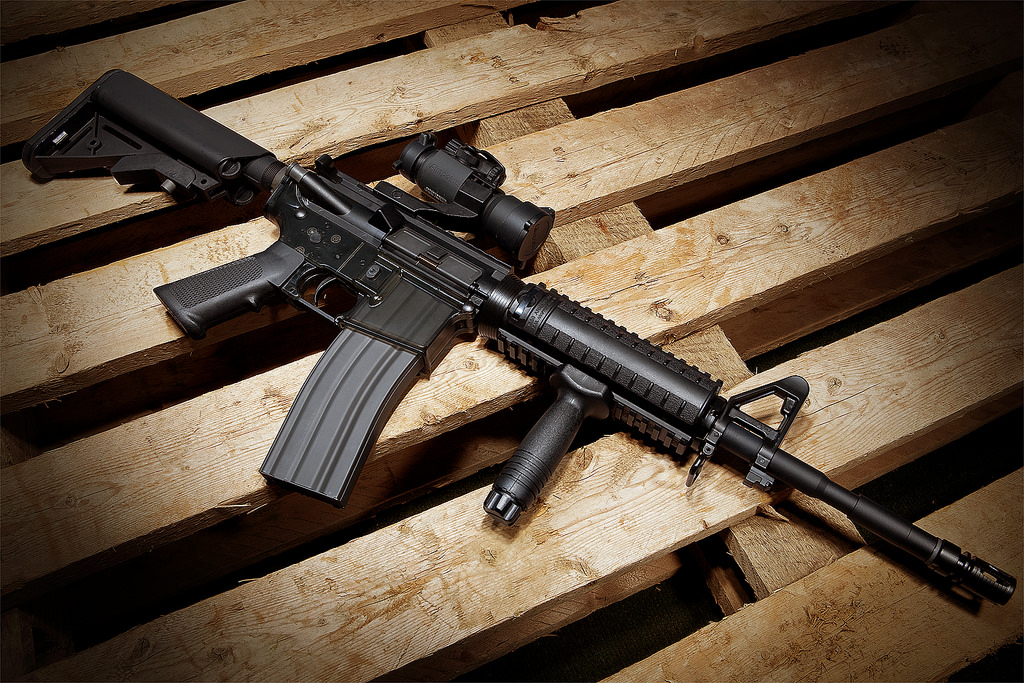
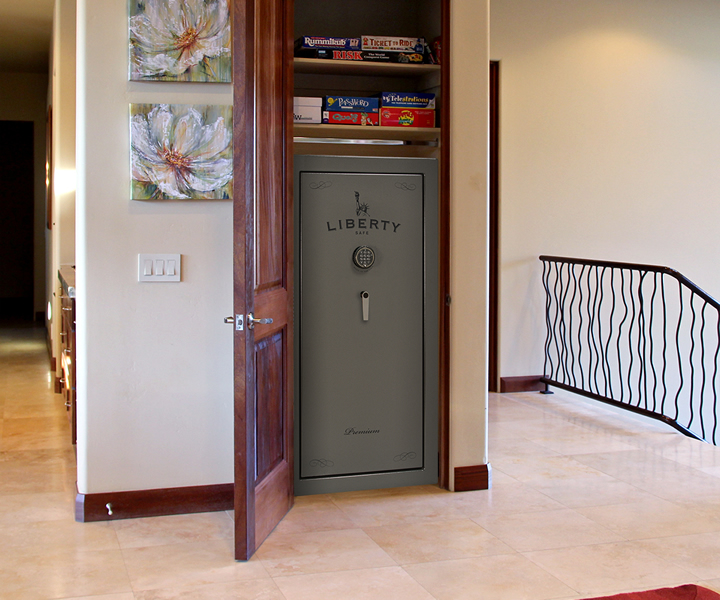
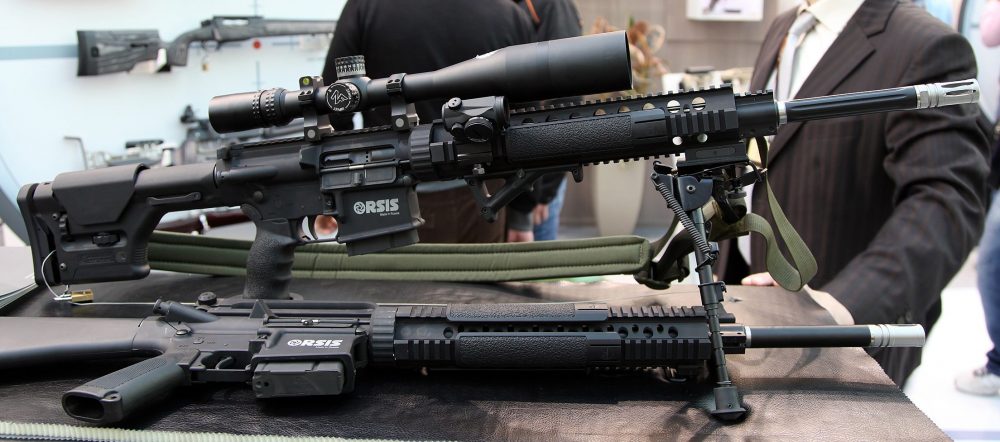
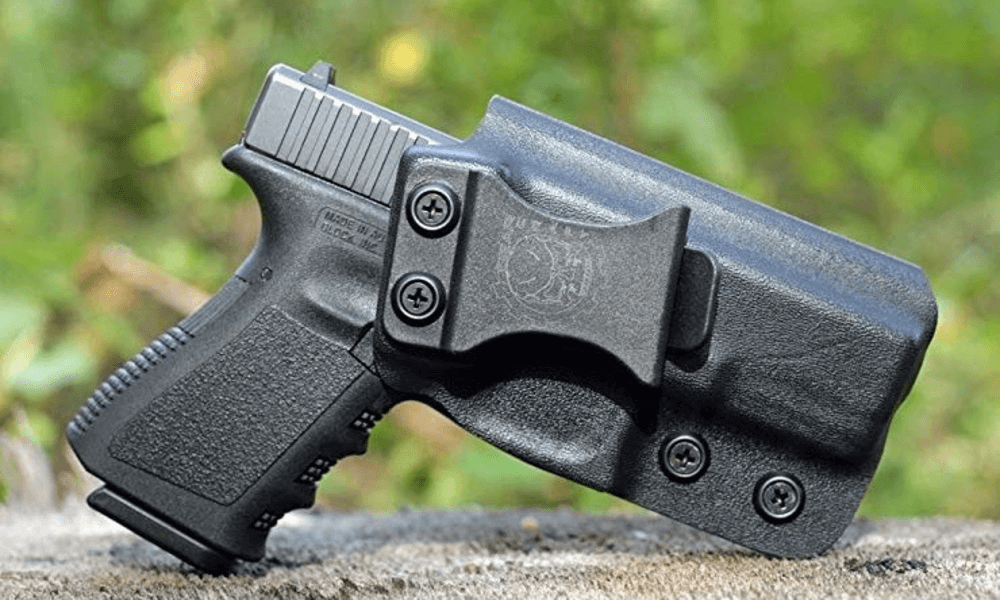
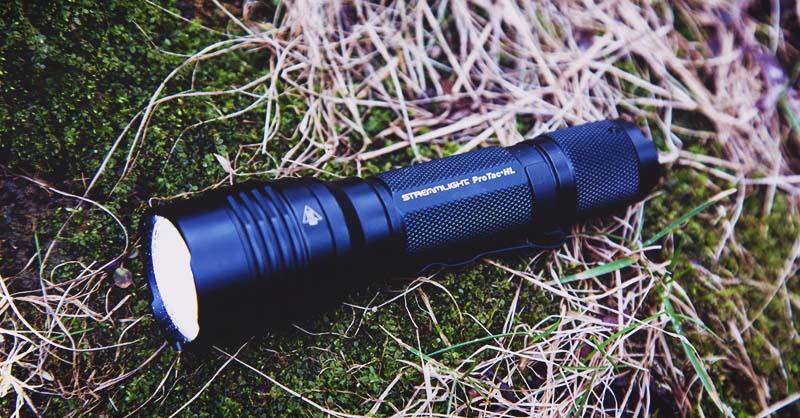
What is the make/model of the “speed loader strip” in the gif at the bottom of the article?